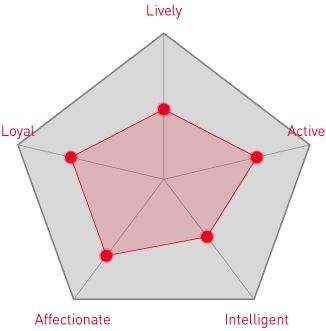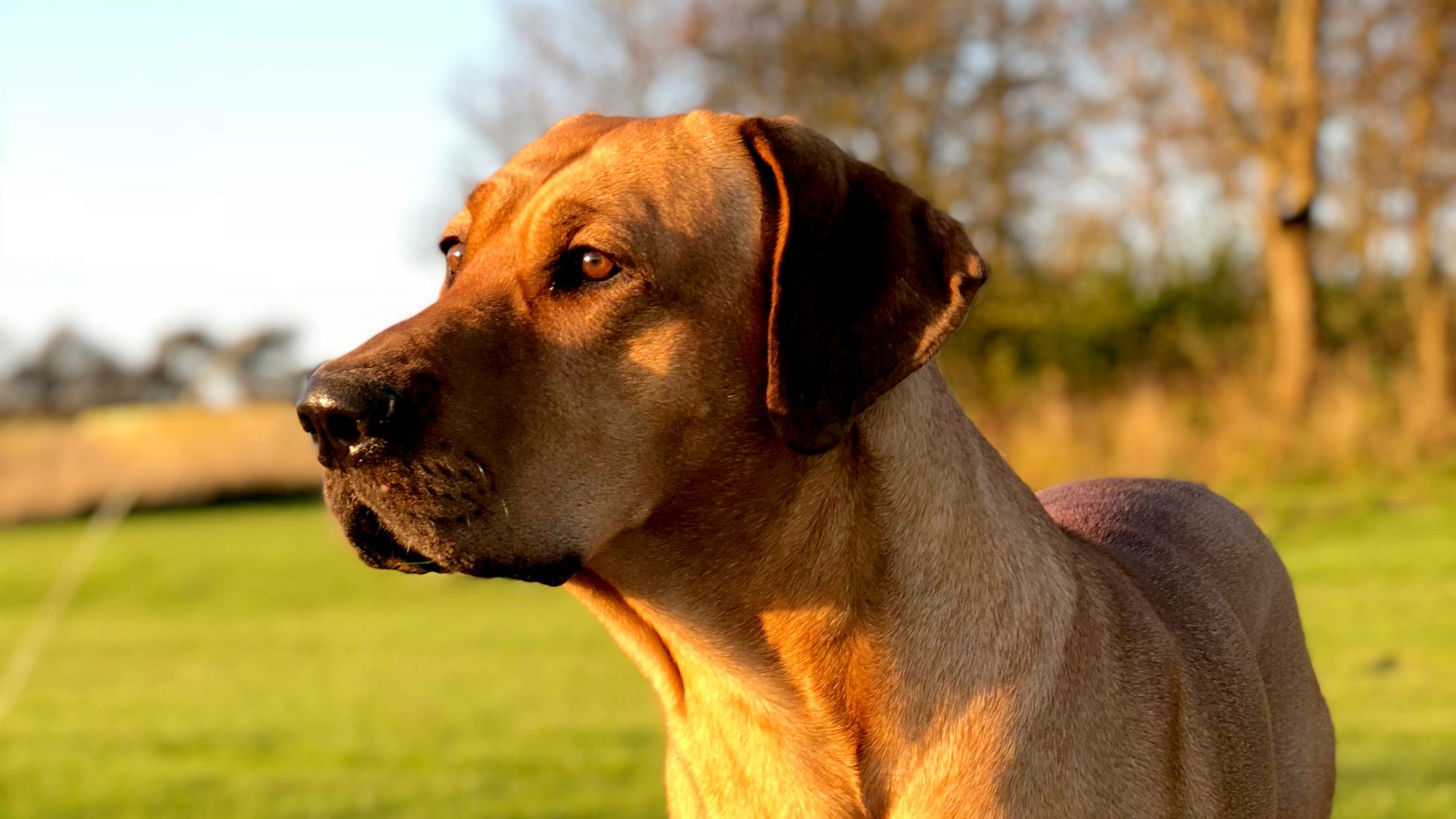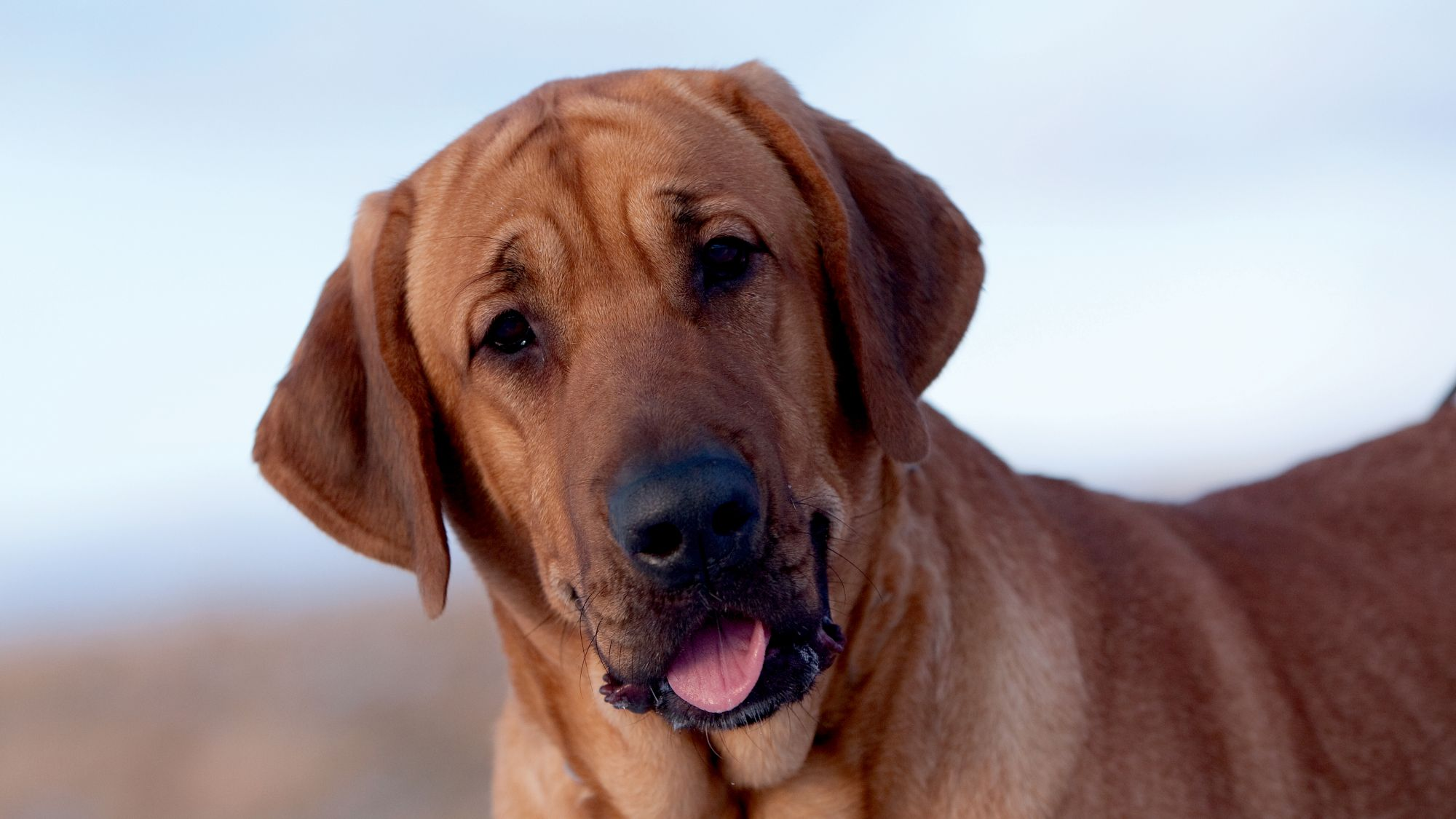
Let's talk Broholmers
Most dogs make wonderful companions and the graceful Broholmer can definitely be added to that list. Long a favourite of royalty in their native Denmark, this tall and lanky canine has gravitated to more modest households where they’re prized for their mild manner and protective streak. The Broholmer is very attached to their family, a pack animal to the core, and is fine in the house but given their origins as a sport dog, would much rather be out and about.Official name: Broholmer
Other names: Danish Mastiff, Danish Broholmer
Origins: Denmark

| Drooling tendencies |
|
Warm weather? | |
| Shedding level | Suited to apartment living? | ||
| Energy Level (high, low, medium) *: | High | Family pet?* |
 |
| Compatibility with other pets |  |
Can stay alone?* |
* We advise against leaving pets alone for long stretches. Companionship can prevent emotional distress and destructive behaviour. Speak to your veterinarian for recommendations.
Every pet is different, even within a breed; this snapshot of this breed’s specifics should be taken as an indication.
For a happy, healthy and well-behaved pet, we recommend educating and socialising your pet as well as covering their basic welfare, social and behavioural needs.
Pets should never be left unsupervised with a child.
All domestic pets are sociable and prefer company. However, they can be taught to cope with solitude from an early age. Seek the advice of your veterinarian or trainer to help you do this.


| Baby age: | Birth to 2 months |
| Puppy age: | 2 to 8 months |
| Adult age: | 8 months to 2 years |
| Mature age: | 2 to 5 years |
| Senior age: | From 5 years |

1/7
Get to know the Broholmer
All you need to know about the breed
Meet the Broholmer. This lovely large breed – a Mastiff type – is truly an ideal family pet once they are fully trained. Despite being classified as giant (they can stand as high as 30 inches, or 76cm), the Broholmer really seems to have no idea just how big they are. They’re huge snugglers, and are even prone to sitting on people, they just want to get that close. The Broholmer has a huge heart but at the same time embodies a need to protect. Introduce your houseguests and the breed will be just fine. Fear not: Any friend of yours is a friend of your Broholmer.
The breed is the national dog of Denmark. Quite rare, most of the dogs are registered in their native country.
The Broholmer is always on their best behaviour, too: They’re excellent with other pets (no high prey drive here) and children, although it’s best to observe them around little ones as their size (and propensity to take a seat wherever they like) could prove dicey. It’s being in the pack that they find most satisfying. Broholmers are always up for playing a game, going for a hike or a ride in the car, just as long as you always come along. Fun is always top of mind for this jubilant breed.

2/7
2 facts about Broholmers
1. Hard to come by
Making a Broholmer part of the family may prove challenging: The breed is highly valued in Denmark, so much so that breeding the Broholmer is done in very small numbers and according to very strict rules. Only about 800 official registrations exist and most of those are in their native land.
2. Keeping calm and carrying on
Some dogs are just chill, and the Broholmer is one. It’s easy to assume a giant breed is formidable but this one is anything but. They hardly bark at all and are known to be a fantastic family pet once they are trained, and they get on swimmingly with their fellow dogs and cats, too, especially when raised alongside them. The Broholmer is also quick to give affection, a regular 150-pound lapdog!
History of the breed
The national dog of Denmark, the Broholmer has had staying power in their homeland for centuries, with historical records tracing them to the Middle Ages. The breed flourished at the start of the 1700s, due to Count Dehested of Broholm, from whom they take their name. He set out to fashion a pure breed and increase the number of Broholmers in the country. Their imposing size made the Broholmer suitable for use in field sport; they later became guardians of farms and large estates.
As with many breeds, the Broholmer saw their numbers dwindle toward the end of WWII. Almost extinct, the Society for the Reconstruction of the Broholmer Breed was formed in 1975, supported by the Danish Kennel Club, enthusiasts committed to sustaining the breed. They were officially registered by the Fédération Cynologique Internationale in 1998. The very first Broholmer was then imported to the U.S. in 2009.

4/7
From head to tail
Physical characteristics of Broholmers
1. Ears
Medium-sized ears, hanging at sides near cheeks, fairly high set.
2. Coat
Short, close-lying coat, thick undercoat.
3. Body
Powerful large body, rectangular in shape.

5/7
Things to look out for
From specific breed traits to a general health overview, here are some interesting facts about your Broholmer

6/7
Caring for your Broholmer
Grooming, training and exercise tips
Having coarse and close-lying fur means that grooming the Broholmer will be a breeze. Brushing them on a weekly basis works to rid their fur of dead hair. And bathing the Broholmer need only happen on an as-needed basis. They are used to being outside, so will pick up dirt here and there, but too many baths will rid them of the natural oils that keep them looking sharp. As with all dogs, their ears, eyes, and nails should be regularly cleaned and trimmed, and teeth should be cleaned as often as possible, daily if you can.This is a breed who is used to being outside so running around is a natural for them. If the Broholmer has been welcomed into the family, exercise should be part of the daily routine. This easy-going dog likes their walks but do keep them on leash since their desire to protect may cause them to be slightly assertive (to note: This is not at all an aggressive dog.) Hikes and a good old Frisbee toss are also great options for this athletic dog. They enjoy games of all kinds so playtime is all the time for the Broholmer. Cooperative and one to please, the Broholmer is easily trained; nonetheless, socialising them early will bring out the best in their behaviour. Their high intelligence means that with firm discipline, the Broholmer will be an all-around superb dog.
7/7
All about Broholmers
Even though the Broholmer is a Mastiff-type breed, they are not quite as large, in terms of their girth. The two dogs are similar in height averaging 28 inches (71cm). However, the Broholmer weighs far less than their Mastiff cousin, who can tip the scales at anywhere from 125 to 230 pounds (57 to 105kg).
Besides Denmark, which boasts the mighty Broholmer, many other countries recognise a local breed that embodies all of their values. In Madagascar, for example, it’s the Coton de Tulear; in South Korea, the sprightly Jeju Dog; in the Republic of Congo, it’s the beautiful Basenji; and Afghanistan, Iran, and Pakistan all recognise the aristocratic Afghan Hound. Official dogs just speak to the ethos and temperament of a place.
translations.feature.breeds.otherbreeds
Read more on this topic

How your dog's nutrition needs change with age

How to adopt a dog

Things to consider before getting a dog
Sources
1 - Veterinary Centers of America https://vcahospitals.com/
2 - Royal Canin Dog Encyclopaedia. Ed 2010 and 2020
3 - Banfield Pet Hospital https://www.banfield.com/
4 - Royal Canin BHN Product Book
5 - American Kennel Club https://www.akc.org/


